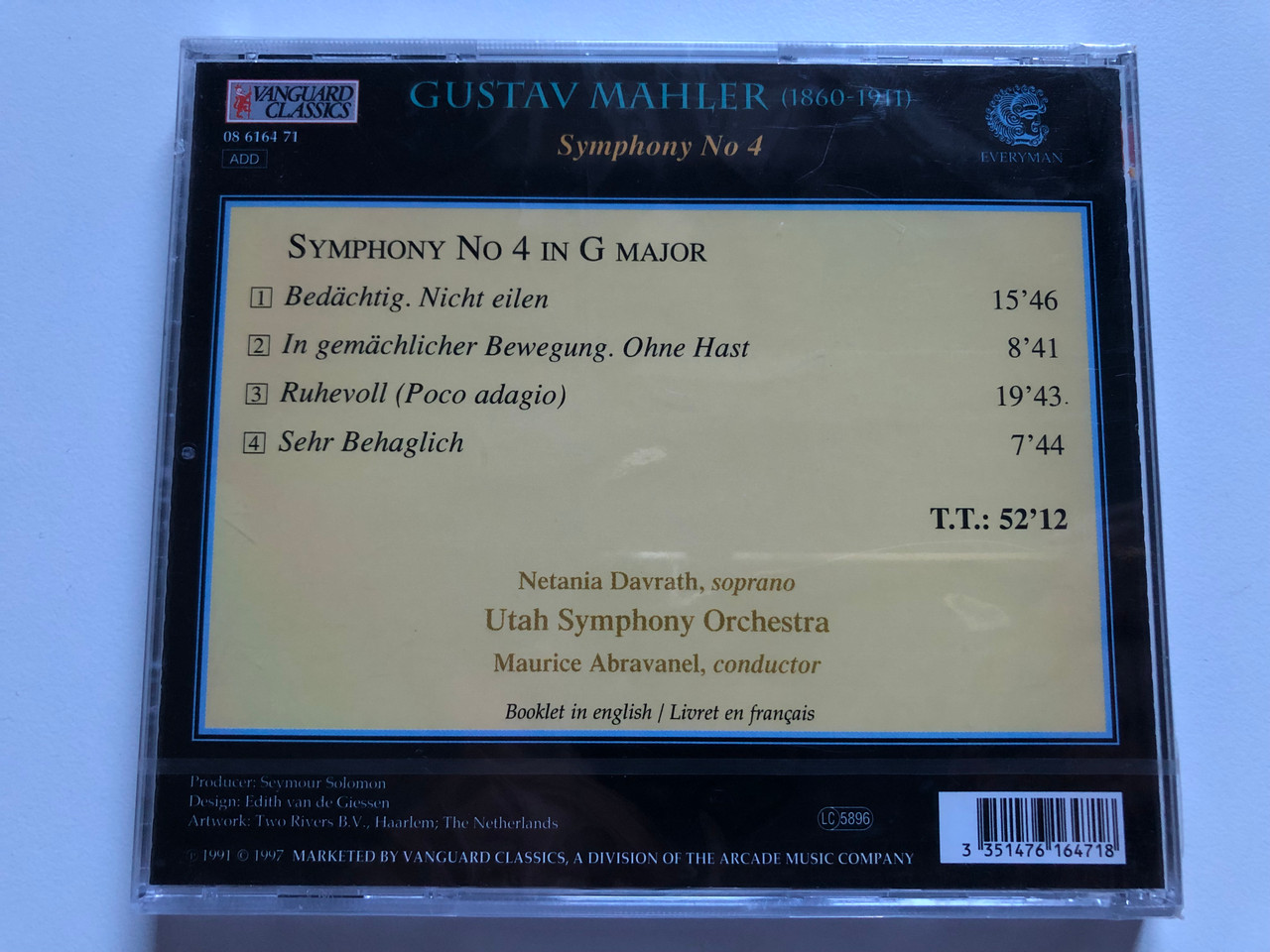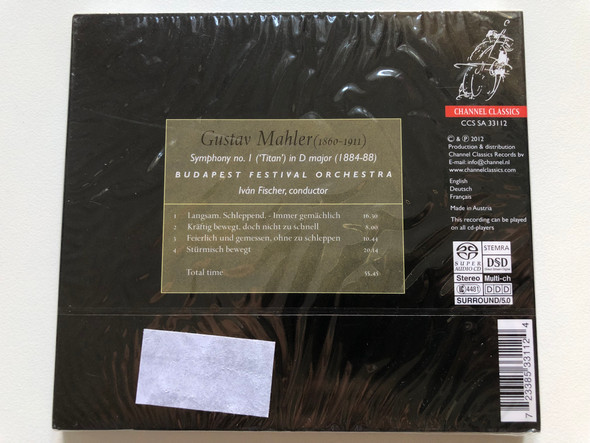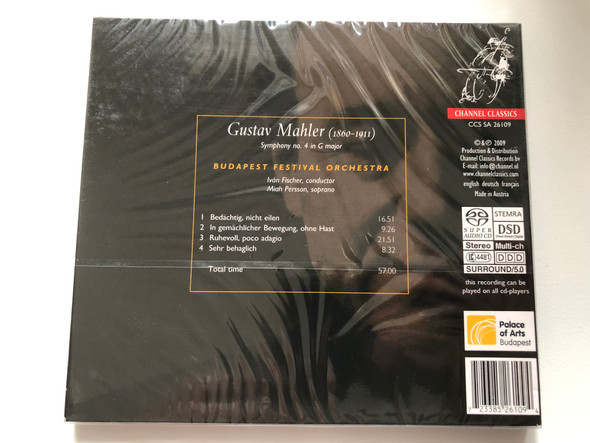Description
Mahler - Symphony No. 4 / Netania Davrath (soprano), Utah Symphony Orchestra, Murice Abravanel (conductor) / Vanguard Everyman Classics / Vanguard Classics Audio CD 1997 / 08 6164 71
UPC 3351476164718
The Symphony No. 4 in G major by Gustav Mahler was composed from 1899 to 1900, though it incorporates a song originally written in 1892. That song, "Das himmlische Leben", presents a child's vision of heaven and is sung by a soprano in the symphony's Finale. Both smaller in orchestration and shorter in length than Mahler's earlier symphonies, the Fourth Symphony was initially planned to be in six movements, alternating between three instrumental and three vocal movements. The symphony's final form—begun in July 1899 at Bad Aussee and completed in August 1900 at Maiernigg—retains only one vocal movement (the Finale) and is in four movements: Bedächtig, nicht eilen (sonata form); In gemächlicher Bewegung, ohne Hast (scherzo and trio); Ruhevoll, poco adagio (double theme and variations); and Sehr behaglich (strophic variations).
The premiere was performed in Munich on 25 November 1901 by the composer and the Kaim Orchestra, but it was met with negative audience and critical reception over the work's confusing intentions and perceived inferiority to the more well-received Second Symphony. The premiere was followed by a German tour, a 1901 Berlin premiere, and a 1902 Vienna premiere, which were met with near-unanimous condemnation of the symphony. Mahler conducted further performances of the symphony, sometimes to warm receptions, and the work received its American and British premieres in 1904 and 1905. The symphony's first edition was published in 1902, but Mahler made revisions in 1905, 1910, and 1911. After Mahler's death, the symphony continued to receive performances under conductors such as Willem Mengelberg and Bruno Walter, and its first recording is a 1930 Japanese rendition conducted by Hidemaro Konoye that is also the first electrical recording of any Mahler symphony. The musicologist Donald Mitchell believes the Fourth and its accessibility were largely responsible for the post-war increase in Mahler's popularity.
The symphony uses cyclic form throughout its structure, such as in the anticipations of the Finale's main theme in the previous three movements. The first movement has been characterized as neoclassical in style, save for its complex development section. The second movement consists of scherzos depicting Death at his fiddle, which are contrasted with Ländler-like trios. The third movement's two themes are varied alternately before reaching a triple forte coda, and the Finale comprises verses from "Das himmlische Leben" sung in strophes that are separated by refrains of the first movement's opening. Certain themes and motifs in the Fourth Symphony are also found in Mahler's Second, Third, and Fifth Symphonies.
| Label: | Vanguard Classics – 08 6164 71 |
|---|---|
| Series: | Vanguard Everyman Classics |
| Format: |
CD
|
| Country: | Europe |
| Released: |
1997 |
| Genre: | Classical |
| Style: | Romantic |
Tracklist:
| Symphony No. 4 In G Major |
| 1 | Bedächtig. Nicht Eilen. | 15:46 |
| 2 | In Gemachlicher Bewegung. Ohne Hast | 8:41 |
| 3 | Ruhevoll (Poco Adagio) | 19:43 |
| 4 | Sehr Behaglich | 7:44 |
- Artwork – Two Rivers B.V.
- Composed By – Gustav Mahler
- Conductor – Maurice Abravanel
- Design – Edith Van De Giessen
- Liner Notes – Jack Diether, Seymour Solomon
- Orchestra – Utah Symphony Orchestra
- Producer – Seymour Solomon
- Soprano Vocals – Netania Davrath (tracks: 4)


























